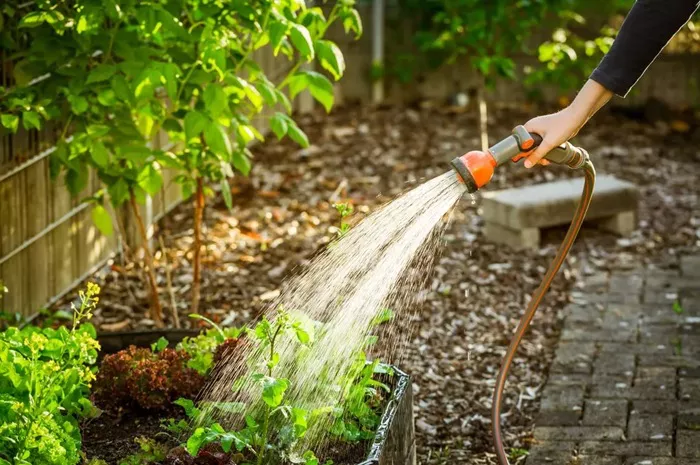The UK is set to experience a heatwave, with temperatures in some areas expected to soar to around 35°C, according to the Global Forecast System from WXCHARTS. This extreme heat is likely to persist until the end of June. As a result, gardening enthusiasts are being advised to adjust their watering habits to protect their plants.
The intense heat can have a negative impact on gardens, causing plants to wilt, experience stunted growth, and develop scorched leaves. To mitigate these effects, gardeners should focus on when and how often they water their plants. Harriet Worsley, from Worsley Design & Consultancy, warns against watering during the day when it’s hot. She advises, “Never water in the daytime when it’s hot. And avoid spraying any water on the leaves in the sunshine, as the water will boil in the sun and the leaves will frazzle – like watering your garden with a kettle,” as reported by Country Living.
Instead, Worsley recommends watering late at night and doing so intensely. She suggests, “Fill pots to the brim and then fill again. It’s the roots that need the water, not the leaves. Be particularly careful with pots and window boxes drying out, as they dry out faster than beds.”
James Ewens, a gardening expert at Green Feathers, echoes this advice. He explains that deep and infrequent watering is more beneficial than frequent, shallow watering during hot spells. He advises, “When watering, aim for the roots, so as low to the ground as possible, and water deeply and infrequently – either early morning or late evening.
Avoiding midday sun will ensure water does not evaporate quickly, and infrequent watering will enable water to soak deeply into the plant. You don’t need to water every morning or evening; it’s better to prioritize longer watering sessions every couple of days.”
To be even more environmentally conscious, gardeners can collect and recycle rainwater, especially if there is a hosepipe ban in their area. Rainwater is preferable to tap water, as it hasn’t been treated or contains chemicals such as chlorine. This can be achieved by collecting rainfall in water butts and barrels, which can then be used during drier summer months.


